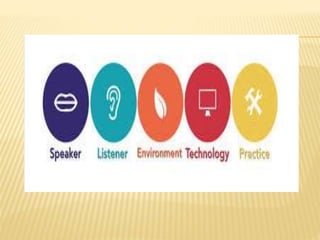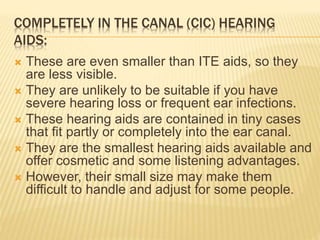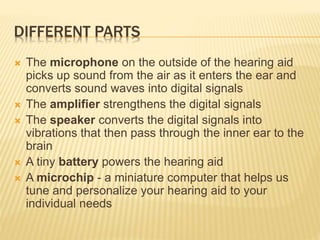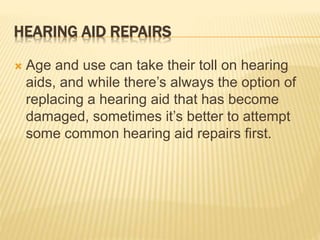This document provides information about hearing aids. It discusses what hearing aids are, when they are used, how hearing disorders are diagnosed, the different types of hearing loss, and methods of treatment including hearing aids, cochlear implants, and assistive devices. It describes the different parts of hearing aids, common repairs, and the process of assessment for hearing aids.


















































